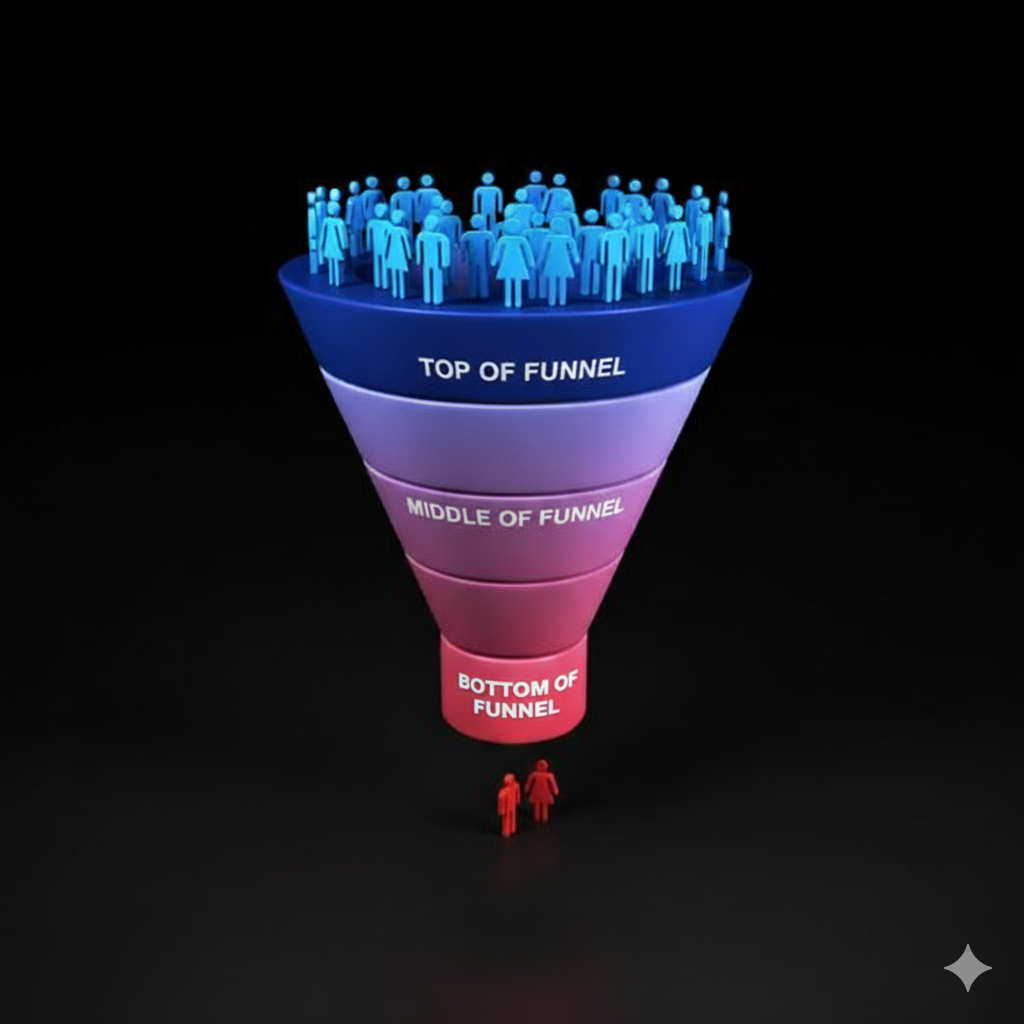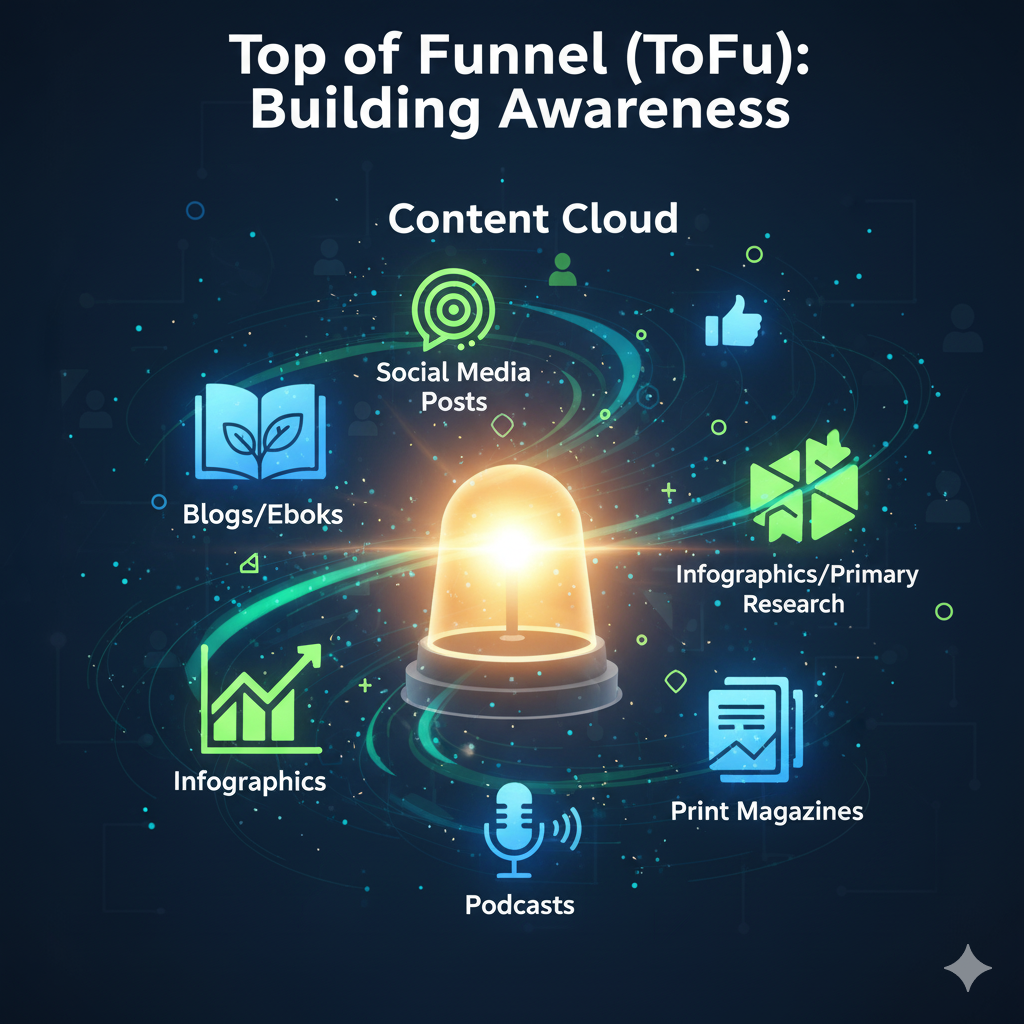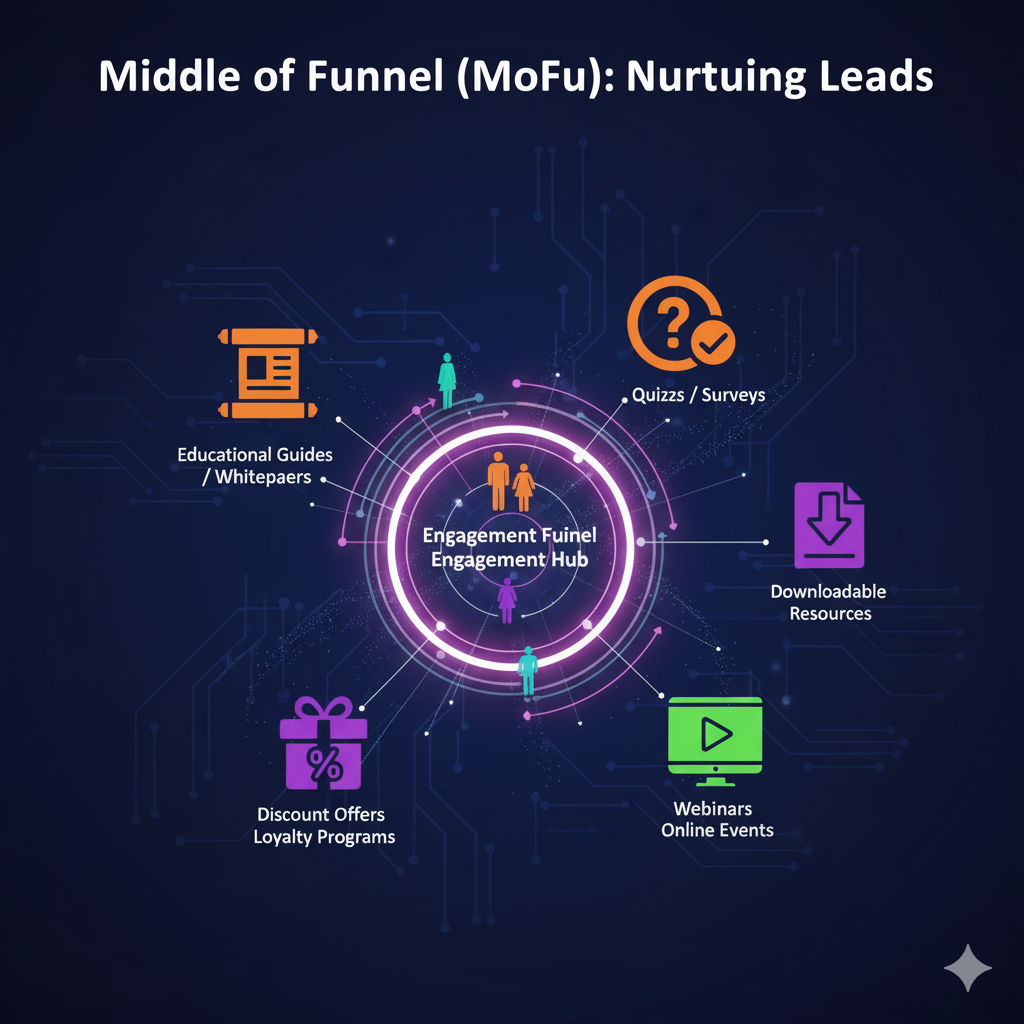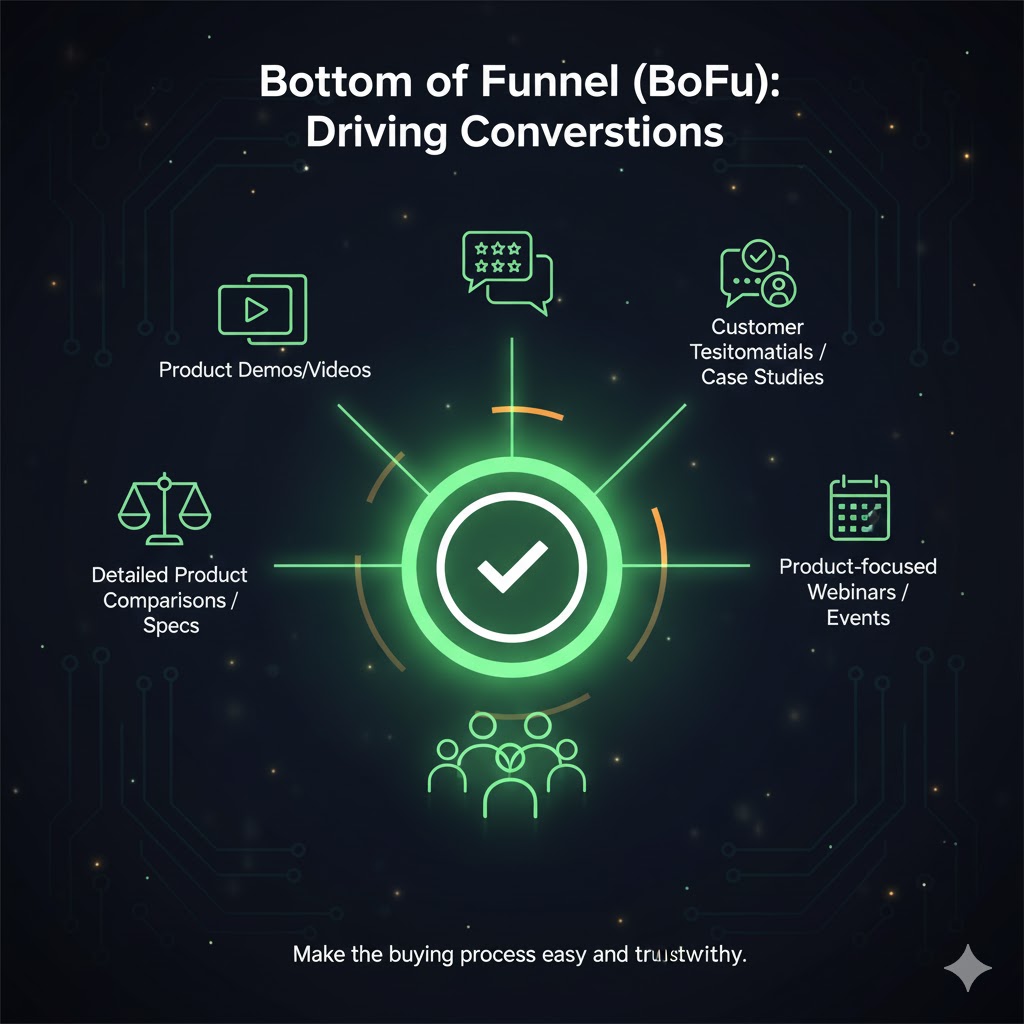
Introduction
In digital marketing, moving a potential customer from first hearing about your brand to making a purchase requires a structured approach. This journey is often represented by the marketing funnel, divided into three stages: Top of Funnel (ToFu), Middle of Funnel (MoFu), and Bottom of Funnel (BoFu).
Each stage aligns with the customer’s awareness and readiness to buy. In this guide, we’ll break down each stage, the types of content that work best, and real-world examples to make it easy to understand—even if you’re just starting.
Top of Funnel (ToFu): Building Awareness

Objective: Make prospects aware of your brand, their problems, and possible solutions.
At this stage, your audience might not even know they have a problem. Your goal is to provide educational content that attracts attention and creates awareness.
Types of ToFu Content:
- Blogs
- Social Media Posts
- Infographics
- Podcasts (Audio & Video)
- Ebooks / Digital Magazines
- Microsites
- Print Magazines / Newsletters
- Primary Research
Real-World Example:
Imagine a company that sells eco-friendly water bottles. At the ToFu stage, they might create:
- A blog post: “5 Hidden Dangers of Plastic Water Bottles”
- A social media infographic highlighting the environmental impact of single-use plastics
Here, the goal is education, not selling. People are just learning about the problem.
Teacher Tip: Focus on awareness and value. Don’t push your product yet. Think like a mentor introducing a new topic to students.
Middle of Funnel (MoFu): Nurturing Leads

Objective: Convert problem-aware prospects into leads by helping them evaluate solutions.
At this stage, your audience knows they have a problem. They are researching solutions, comparing options, and seeking guidance.
Types of MoFu Content:
- Educational guides / Whitepapers
- Quizzes / Surveys
- Discount offers / Loyalty programs
- Downloadable resources (templates, checklists)
- Webinars / Online events
Real-World Example:
Continuing with our eco-friendly bottle brand:
- A guide: “Choosing the Best Eco-Friendly Water Bottle: BPA-Free Options”
- A downloadable comparison chart of different bottles
- A webinar on sustainable living
- Joining a loyalty program
Teacher Tip: Use interactive content—quizzes, surveys, and downloadable guides are excellent for engagement. Think like a teacher giving students exercises to help them understand concepts deeply.
Bottom of Funnel (BoFu): Driving Conversions

Objective: Turn leads into paying customers with actionable and trustworthy content.
At this stage, your prospects are ready to buy. They need guidance to make a confident choice.
Types of BoFu Content:
- Product demos / Videos
- Customer testimonials / Case studies
- Detailed product comparisons / Specs
- Product-focused webinars or events
Real-World Example:
For our eco-friendly water bottle brand, BoFu content might include:
- Demo video showcasing durability and design
- Customer testimonial: “I switched to this bottle and saved 500 plastic bottles in a year”
- Comparison chart showing how their bottle outperforms competitors
Teacher Tip: Make the buying process easy and trustworthy. Offer reviews, comparisons, and clear instructions to remove doubts. Think like a mentor guiding students on how to apply knowledge in real life.
Understanding the Customer Awareness Journey
The marketing funnel aligns with the stages of customer awareness:
| Awareness Level | Funnel Stage | Content Example |
| Unaware | ToFu | Educational blogs, infographics |
| Problem Aware | MoFu | Guides, downloadable checklists |
| Solution Aware | MoFu | Comparison charts, webinars |
| Product Aware | BoFu | Product demos, case studies |
| Most Aware | BoFu | Offers, testimonials, direct CTA |
Teacher Analogy:
Think of it like teaching a student:
- Introduce a topic (ToFu)
- Explain details and provide exercises (MoFu)
- Let them apply knowledge or test them (BoFu)
Advanced Tips for Funnel Optimization
- Segment Your Audience: Not every prospect follows the same path. Segment by interests, demographics, or behavior.
- Personalize Content: Tailor emails, offers, and retargeting ads to the prospect’s funnel stage.
- Track Engagement Metrics: Monitor clicks, downloads, sign-ups, and conversions. Adjust content if prospects aren’t moving down the funnel.
- Retargeting: Use ads or emails to guide prospects who drop off at any stage back into the funnel.
- Use Automation Tools: Platforms like HubSpot, Mailchimp, or ActiveCampaign can automate nurturing workflows, making MoFu and BoFu stages more efficient.
Conclusion
A well-planned ToFu, MoFu, BoFu strategy ensures your marketing content guides prospects naturally from awareness to purchase. By delivering the right content at the right stage, you can:
- Build trust with your audience
- Educate them about problems and solutions
Convert leads into informed buyers